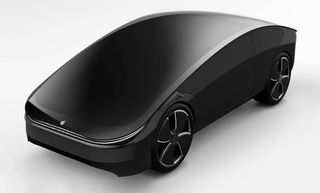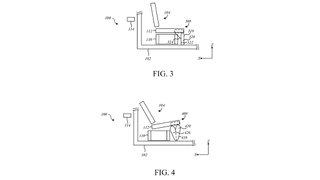Apple Car patent shows new approach to safety
If you’re not facing forward, where do the airbags go?

While all eyes are on Vision Pro, Apple has long been working away on hardware that would make the AR headset’s MSRP look like pocket change: a $100,000 self-driving car.
The so-called Apple Car isn’t coming any time soon — last we heard, it had been pushed back to 2026 at the earliest — but the company continues to work on it behind the scenes. Earlier this month, it was reported that Apple had upped the number of test cars by two to 68 — still small fry compared to the likes of Zoox, Waymo and Cruise, which have hundreds each, but progress nonetheless.
Unlike conventional vehicles where seats are fixed in position, the dream of the Apple Car is reportedly to allow seating to rotate, slide and recline into different positions while the vehicle drives you.
But that presents a problem for airbags. In cars with fixed seating, manufacturers can have a pretty good idea as to where your head will be in the event of an accident. It’s much harder to predict with flexible seating.
It appears Apple has given this dilemma some thought. A patent spotted by Patently Apple shows one solution, where airbags are stored under seats rather than in interior surfaces. In other words, the seat you’re facing will be storing the airbag that will hopefully save your life in the event of a crash.

“The system includes a sensor system configured to detect an imminent event, detect an occupant facing the seat, and detect a stowed object beneath the seat,” the patent summary reads. “The system also includes an airbag (e.g., a restraint) configured to deploy from the seat, restrain motion of the occupant facing the seat, and restrain motion of the stowed object beneath the seat.”
It’s certainly nice that companies are thinking about these problems. But with driverless car accidents still occasionally popping up in the news even with their extremely limited testing roll-out, the idea of pushing passengers further away from any kind of manual control with flexible seating feels risky.
Sign up to get the BEST of Tom’s Guide direct to your inbox.
Upgrade your life with a daily dose of the biggest tech news, lifestyle hacks and our curated analysis. Be the first to know about cutting-edge gadgets and the hottest deals.
Indeed, while it was once suggested that the Apple Car won’t have any manual controls at all, that has reportedly been shelved for the time being. With that in mind, it’s possible that this patent isn’t for a more conventional first-generation Apple Car, but for one years down the line, when self-driving cars have proven they can be trusted on all of America’s roads.
Freelance contributor Alan has been writing about tech for over a decade, covering phones, drones and everything in between. Previously Deputy Editor of tech site Alphr, his words are found all over the web and in the occasional magazine too. When not weighing up the pros and cons of the latest smartwatch, you'll probably find him tackling his ever-growing games backlog. Or, more likely, playing Spelunky for the millionth time.

